| Weight | 1 lbs |
|---|---|
| Dimensions | 9 × 5 × 2 in |
| host | rabbit |
| isotype | IgG |
| clonality | polyclonal |
| concentration | 1 mg/mL |
| applications | ICC/IF, WB |
| reactivity | Angiotensin Converting Enzyme 2 (ACE2) |
| available sizes | 100 µL |
rabbit anti-Angiotensin Converting Enzyme 2 (ACE2) polyclonal antibody 8113
$431.00
Antibody summary
- Rabbit polyclonal to Angiotensin Converting Enzyme 2 (ACE2)
- Suitable for: WB,IHC
- Isotype: Whole IgG
- 100 µl
rabbit anti-Angiotensin Converting Enzyme 2 (ACE2) polyclonal antibody 8113
| antibody |
|---|
| Tested applications WB,IHC,IHC |
| Recommended dilutions Immunoblotting: use at dilutions of 1:1,000-1:5,000. A band of ~92kDa is detected. Detection of ACE2 in human kidney lysate with #19502 diluted 1:1,000 IHC: use at dilutions of 1:50-1:200. Detection of ACE2 in paraffin-embedded human kidney. Detection of ACE2 in paraffin-embedded human breas |
| Immunogen Recombinant human ACE2 produced in a mammalian expression system. |
| Size and concentration 100µL and lot specific |
| Form liquid |
| Storage Instructions This antibody is stable for at least one (1) year at -20°C. |
| Storage buffer TBS, pH 7.4, 1% BSA, 40% glycerol, 0.05% NaN |
| Purity protein affinity purification |
| Clonality polyclonal |
| Isotype IgG |
| Compatible secondaries goat anti-rabbit IgG, H&L chain specific, peroxidase conjugated, conjugated polyclonal antibody 9512 goat anti-rabbit IgG, H&L chain specific, biotin conjugated polyclonal antibody 2079 goat anti-rabbit IgG, H&L chain specific, FITC conjugated polyclonal antibody 7863 goat anti-rabbit IgG, H&L chain specific, Cross Absorbed polyclonal antibody 2371 goat anti-rabbit IgG, H&L chain specific, biotin conjugated polyclonal antibody, crossabsorbed 1715 goat anti-rabbit IgG, H&L chain specific, FITC conjugated polyclonal antibody, crossabsorbed 1720 |
| Isotype control Rabbit polyclonal - Isotype Control |
| target relevance |
|---|
| Protein names Angiotensin-converting enzyme 2 (EC 3.4.17.23) (Angiotensin-converting enzyme homolog) (ACEH) (Angiotensin-converting enzyme-related carboxypeptidase) (ACE-related carboxypeptidase) (EC 3.4.17.-) (Metalloprotease MPROT15) [Cleaved into: Processed angiotensin-converting enzyme 2] |
| Gene names ACE2,ACE2 UNQ868/PRO1885 |
| Protein family Peptidase M2 family |
| Mass 92463Da |
| Function FUNCTION: Essential counter-regulatory carboxypeptidase of the renin-angiotensin hormone system that is a critical regulator of blood volume, systemic vascular resistance, and thus cardiovascular homeostasis (PubMed:27217402). Converts angiotensin I to angiotensin 1-9, a nine-amino acid peptide with anti-hypertrophic effects in cardiomyocytes, and angiotensin II to angiotensin 1-7, which then acts as a beneficial vasodilator and anti-proliferation agent, counterbalancing the actions of the vasoconstrictor angiotensin II (PubMed:10924499, PubMed:10969042, PubMed:11815627, PubMed:14504186, PubMed:19021774). Also removes the C-terminal residue from three other vasoactive peptides, neurotensin, kinetensin, and des-Arg bradykinin, but is not active on bradykinin (PubMed:10969042, PubMed:11815627). Also cleaves other biological peptides, such as apelins (apelin-13, [Pyr1]apelin-13, apelin-17, apelin-36), casomorphins (beta-casomorphin-7, neocasomorphin) and dynorphin A with high efficiency (PubMed:11815627, PubMed:27217402, PubMed:28293165). In addition, ACE2 C-terminus is homologous to collectrin and is responsible for the trafficking of the neutral amino acid transporter SL6A19 to the plasma membrane of gut epithelial cells via direct interaction, regulating its expression on the cell surface and its catalytic activity (PubMed:18424768, PubMed:19185582). {ECO:0000269|PubMed:10924499, ECO:0000269|PubMed:10969042, ECO:0000269|PubMed:11815627, ECO:0000269|PubMed:14504186, ECO:0000269|PubMed:18424768, ECO:0000269|PubMed:19021774, ECO:0000269|PubMed:19185582, ECO:0000269|PubMed:27217402}.; FUNCTION: (Microbial infection) Acts as a receptor for human coronaviruses SARS-CoV and SARS-CoV-2, as well as human coronavirus NL63/HCoV-NL63. {ECO:0000269|PubMed:14647384, ECO:0000269|PubMed:15452268, ECO:0000269|PubMed:15791205, ECO:0000269|PubMed:15897467, ECO:0000269|PubMed:19901337, ECO:0000269|PubMed:24227843, ECO:0000269|PubMed:32142651, ECO:0000269|PubMed:32155444, ECO:0000269|PubMed:32221306, ECO:0000269|PubMed:32225175, ECO:0000269|PubMed:33000221, ECO:0000269|PubMed:33082294, ECO:0000269|PubMed:33432067}.; FUNCTION: [Isoform 2]: Non-functional as a carboxypeptidase. {ECO:0000269|PubMed:33077916}.; FUNCTION: [Isoform 2]: (Microbial infection) Non-functional as a receptor for human coronavirus SARS-CoV-2. {ECO:0000269|PubMed:33077916, ECO:0000269|PubMed:33432184}. |
| Catalytic activity CATALYTIC ACTIVITY: Reaction=angiotensin II + H2O = angiotensin-(1-7) + L-phenylalanine; Xref=Rhea:RHEA:26554, ChEBI:CHEBI:15377, ChEBI:CHEBI:58095, ChEBI:CHEBI:58506, ChEBI:CHEBI:58922; EC=3.4.17.23; Evidence={ECO:0000269|PubMed:10924499, ECO:0000269|PubMed:11815627, ECO:0000269|PubMed:19021774, ECO:0000305|PubMed:14504186}; PhysiologicalDirection=left-to-right; Xref=Rhea:RHEA:26555; Evidence={ECO:0000269|PubMed:14504186}; CATALYTIC ACTIVITY: Reaction=angiotensin I + H2O = angiotensin-(1-9) + L-leucine; Xref=Rhea:RHEA:63532, ChEBI:CHEBI:15377, ChEBI:CHEBI:57427, ChEBI:CHEBI:147350, ChEBI:CHEBI:147351; Evidence={ECO:0000269|PubMed:10924499, ECO:0000269|PubMed:10969042, ECO:0000269|PubMed:11815627, ECO:0000269|PubMed:19021774}; PhysiologicalDirection=left-to-right; Xref=Rhea:RHEA:63533; Evidence={ECO:0000305|PubMed:10924499, ECO:0000305|PubMed:10969042, ECO:0000305|PubMed:11815627, ECO:0000305|PubMed:19021774}; CATALYTIC ACTIVITY: Reaction=bradykinin(1-8) + H2O = bradykinin(1-7) + L-phenylalanine; Xref=Rhea:RHEA:63536, ChEBI:CHEBI:15377, ChEBI:CHEBI:58095, ChEBI:CHEBI:133069, ChEBI:CHEBI:147352; Evidence={ECO:0000269|PubMed:10969042, ECO:0000269|PubMed:11815627}; PhysiologicalDirection=left-to-right; Xref=Rhea:RHEA:63537; Evidence={ECO:0000305|PubMed:10969042, ECO:0000305|PubMed:11815627}; CATALYTIC ACTIVITY: Reaction=neurotensin + H2O = neurotensin-(1-12) + L-leucine; Xref=Rhea:RHEA:63540, ChEBI:CHEBI:15377, ChEBI:CHEBI:57427, ChEBI:CHEBI:147362, ChEBI:CHEBI:147363; Evidence={ECO:0000269|PubMed:10969042}; PhysiologicalDirection=left-to-right; Xref=Rhea:RHEA:63541; Evidence={ECO:0000305|PubMed:10969042}; CATALYTIC ACTIVITY: Reaction=neurotensin-(1-8) + H2O = neurotensin-(1-7) + L-arginine; Xref=Rhea:RHEA:63572, ChEBI:CHEBI:15377, ChEBI:CHEBI:32682, ChEBI:CHEBI:147393, ChEBI:CHEBI:147394; Evidence={ECO:0000269|PubMed:11815627}; PhysiologicalDirection=left-to-right; Xref=Rhea:RHEA:63573; Evidence={ECO:0000305|PubMed:11815627}; CATALYTIC ACTIVITY: Reaction=kinetensin + H2O = kinetensin-(1-8) + L-leucine; Xref=Rhea:RHEA:63544, ChEBI:CHEBI:15377, ChEBI:CHEBI:57427, ChEBI:CHEBI:147364, ChEBI:CHEBI:147365; Evidence={ECO:0000269|PubMed:10969042}; PhysiologicalDirection=left-to-right; Xref=Rhea:RHEA:63545; Evidence={ECO:0000305|PubMed:10969042}; CATALYTIC ACTIVITY: Reaction=dynorphin A-(1-13) + H2O = dynorphin A-(1-12) + L-lysine; Xref=Rhea:RHEA:63556, ChEBI:CHEBI:15377, ChEBI:CHEBI:32551, ChEBI:CHEBI:147381, ChEBI:CHEBI:147383; Evidence={ECO:0000269|PubMed:11815627}; PhysiologicalDirection=left-to-right; Xref=Rhea:RHEA:63557; Evidence={ECO:0000305|PubMed:11815627}; CATALYTIC ACTIVITY: Reaction=apelin-13 + H2O = apelin-12 + L-phenylalanine; Xref=Rhea:RHEA:63564, ChEBI:CHEBI:15377, ChEBI:CHEBI:58095, ChEBI:CHEBI:147395, ChEBI:CHEBI:147396; Evidence={ECO:0000269|PubMed:11815627}; PhysiologicalDirection=left-to-right; Xref=Rhea:RHEA:63565; Evidence={ECO:0000305|PubMed:11815627}; CATALYTIC ACTIVITY: Reaction=[Pyr1]apelin-13 + H2O = [Pyr1]apelin-12 + L-phenylalanine; Xref=Rhea:RHEA:63604, ChEBI:CHEBI:15377, ChEBI:CHEBI:58095, ChEBI:CHEBI:147415, ChEBI:CHEBI:147416; Evidence={ECO:0000269|PubMed:27217402, ECO:0000269|PubMed:28293165}; PhysiologicalDirection=left-to-right; Xref=Rhea:RHEA:63605; Evidence={ECO:0000269|PubMed:27217402}; CATALYTIC ACTIVITY: Reaction=apelin-17 + H2O = apelin-16 + L-phenylalanine; Xref=Rhea:RHEA:63608, ChEBI:CHEBI:15377, ChEBI:CHEBI:58095, ChEBI:CHEBI:147421, ChEBI:CHEBI:147422; Evidence={ECO:0000269|PubMed:27217402}; PhysiologicalDirection=left-to-right; Xref=Rhea:RHEA:63609; Evidence={ECO:0000269|PubMed:27217402}; CATALYTIC ACTIVITY: Reaction=beta-casomorphin-7 + H2O = beta-casomorphin-6 + L-isoleucine; Xref=Rhea:RHEA:63568, ChEBI:CHEBI:15377, ChEBI:CHEBI:58045, ChEBI:CHEBI:147390, ChEBI:CHEBI:147391; Evidence={ECO:0000269|PubMed:11815627}; PhysiologicalDirection=left-to-right; Xref=Rhea:RHEA:63569; Evidence={ECO:0000305|PubMed:11815627}; CATALYTIC ACTIVITY: Reaction=neocasomorphin + H2O = neocasomorphin-(1-5) + L-isoleucine; Xref=Rhea:RHEA:63600, ChEBI:CHEBI:15377, ChEBI:CHEBI:58045, ChEBI:CHEBI:147417, ChEBI:CHEBI:147418; Evidence={ECO:0000269|PubMed:11815627}; PhysiologicalDirection=left-to-right; Xref=Rhea:RHEA:63601; Evidence={ECO:0000305|PubMed:11815627}; |
| Subellular location SUBCELLULAR LOCATION: [Processed angiotensin-converting enzyme 2]: Secreted {ECO:0000269|PubMed:15983030, ECO:0000269|PubMed:33713620}.; SUBCELLULAR LOCATION: Cell membrane {ECO:0000269|PubMed:18424768}; Single-pass type I membrane protein {ECO:0000255}. Cytoplasm {ECO:0000250|UniProtKB:Q8R0I0}. Cell projection, cilium {ECO:0000269|PubMed:33432184}. Apical cell membrane {ECO:0000269|PubMed:33432184}. Note=Detected in both cell membrane and cytoplasm in neurons. {ECO:0000250|UniProtKB:Q8R0I0}.; SUBCELLULAR LOCATION: [Isoform 2]: Apical cell membrane {ECO:0000269|PubMed:33432184}. |
| Tissues TISSUE SPECIFICITY: Expressed in endothelial cells from small and large arteries, and in arterial smooth muscle cells (at protein level) (PubMed:15141377). Expressed in enterocytes of the small intestine, Leydig cells and Sertoli cells (at protein level) (PubMed:15141377). Expressed in the renal proximal tubule and the small intestine (at protein level) (PubMed:18424768). Expressed in heart, kidney, testis, and gastrointestinal system (at protein level) (PubMed:10924499, PubMed:10969042, PubMed:12459472, PubMed:15231706, PubMed:15671045, PubMed:32170560, PubMed:32715618). In lung, expressed at low levels in some alveolar type 2 cells, the expression seems to be individual-specific (at protein level) (PubMed:15141377, PubMed:32170560, PubMed:32425701, PubMed:32715618, PubMed:33432184). Expressed in nasal epithelial cells (at protein level) (PubMed:32333915, PubMed:33432184). Coexpressed with TMPRSS2 within some lung alveolar type 2 cells, ileal absorptive enterocytes, intestinal epithelial cells, cornea, gallbladder and nasal goblet secretory cells (PubMed:32327758, PubMed:32358202, PubMed:32413319). Coexpressed with TMPRSS4 within mature enterocytes (PubMed:32404436). {ECO:0000269|PubMed:10924499, ECO:0000269|PubMed:10969042, ECO:0000269|PubMed:12459472, ECO:0000269|PubMed:15141377, ECO:0000269|PubMed:15231706, ECO:0000269|PubMed:15671045, ECO:0000269|PubMed:18424768, ECO:0000269|PubMed:32170560, ECO:0000269|PubMed:32327758, ECO:0000269|PubMed:32333915, ECO:0000269|PubMed:32358202, ECO:0000269|PubMed:32404436, ECO:0000269|PubMed:32413319, ECO:0000269|PubMed:32425701, ECO:0000269|PubMed:32715618, ECO:0000269|PubMed:33432184}.; TISSUE SPECIFICITY: [Isoform 2]: Expressed in nasal and bronchial epithelial cells (at protein level). {ECO:0000269|PubMed:33432184}. |
| Structure SUBUNIT: Homodimer (PubMed:32132184). Interacts with the catalytically active form of TMPRSS2 (PubMed:21068237). Interacts with SLC6A19; this interaction is essential for expression and function of SLC6A19 in intestine (By similarity). Interacts with ITGA5:ITGB1 (PubMed:15276642, PubMed:33102950). Probably interacts (via endocytic sorting signal motif) with AP2M1; the interaction is inhibited by phosphorylation of Tyr-781 (PubMed:33436498). Interacts (via PDZ-binding motif) with NHERF1 (via PDZ domains); the interaction may enhance ACE2 membrane residence (PubMed:34189428). {ECO:0000250|UniProtKB:Q8R0I0, ECO:0000269|PubMed:15276642, ECO:0000269|PubMed:21068237, ECO:0000269|PubMed:32132184, ECO:0000269|PubMed:33102950, ECO:0000269|PubMed:33436498, ECO:0000269|PubMed:34189428}.; SUBUNIT: (Microbial infection) Interacts with SARS coronavirus/SARS-CoV spike protein. {ECO:0000269|PubMed:14647384, ECO:0000269|PubMed:15452268, ECO:0000269|PubMed:15791205, ECO:0000269|PubMed:32225175}.; SUBUNIT: (Microbial infection) Interacts with SARS coronavirus-2/SARS-CoV-2 spike protein (via RBD domain). {ECO:0000269|PubMed:32075877, ECO:0000269|PubMed:32132184, ECO:0000269|PubMed:32155444, ECO:0000269|PubMed:32225175, ECO:0000269|PubMed:32753553, ECO:0000269|PubMed:33102950, ECO:0000269|PubMed:33432067, ECO:0000269|PubMed:36228039, ECO:0000269|PubMed:36735681, ECO:0000269|PubMed:36757924}.; SUBUNIT: (Microbial infection) Interacts with human coronavirus NL63 spike protein. {ECO:0000269|PubMed:19901337}.; SUBUNIT: (Microbial infection) Interacts with human coronavirus NL63/HCoV-NL63 spike glycoprotein. {ECO:0000269|PubMed:15897467}.; SUBUNIT: [Processed angiotensin-converting enzyme 2]: (Microbial infection) Interacts with SARS coronavirus-2/SARS-CoV-2 spike protein; the interaction is increased by AVP/Arg-vasopressin with which they may form a complex. {ECO:0000269|PubMed:33713620}. |
| Post-translational modification PTM: N-glycosylation on Asn-90 may limit SARS infectivity. {ECO:0000269|PubMed:10924499, ECO:0000269|PubMed:14647384, ECO:0000269|PubMed:14754895, ECO:0000269|PubMed:15084671, ECO:0000269|PubMed:19159218}.; PTM: Proteolytic cleavage by ADAM17 generates a secreted form (PubMed:15983030, PubMed:33713620). Also cleaved by serine proteases: TMPRSS2, TMPRSS11D and HPN/TMPRSS1. {ECO:0000269|PubMed:15983030, ECO:0000269|PubMed:21068237, ECO:0000269|PubMed:21563828, ECO:0000269|PubMed:24227843, ECO:0000269|PubMed:32132184, ECO:0000269|PubMed:33713620}.; PTM: Phosphorylated. Phosphorylation at Tyr-781 probably inhibits interaction with AP2M1 and enables interactions with proteins containing SH2 domains. {ECO:0000305|PubMed:33436497, ECO:0000305|PubMed:33436498}.; PTM: Ubiquitinated. Ubiquitinated on Lys-788 via 'Lys-48'-linked ubiquitin (PubMed:36876523). 'Lys-48'-linked deubiquitinated by USP50 on the Lys-788; leading to its stabilization (PubMed:36876523). {ECO:0000269|PubMed:36876523}. |
| Domain DOMAIN: The extracellular region of the ACE2 enzyme is composed of two domains. The first is a zinc metallopeptidase domain (residues 19-611). The second domain is located at the C-terminus (residues 612-740) and is 48% identical to human collectrin. {ECO:0000269|PubMed:14754895}.; DOMAIN: The cytoplasmic tail contains several linear motifs such as LIR, PDZ-binding, PTB and endocytic sorting signal motifs that would allow interaction with proteins that mediate endocytic trafficking and autophagy. {ECO:0000305|PubMed:33436497, ECO:0000305|PubMed:33436498}. |
| Biotechnology BIOTECHNOLOGY: An engeneered stable, dimeric and secreted receptor with combined mutations that increase the affinity for human coronavirus SARS-CoV-2 spike protein shows potent SARS-CoV and SARS-CoV-2 neutralization in vitro. {ECO:0000269|PubMed:32753553}. |
| Target Relevance information above includes information from UniProt accession: Q9BYF1 |
| The UniProt Consortium |
Data
Publications
| pmid | title | authors | citation |
|---|---|---|---|
| We haven't added any publications to our database yet. | |||
Protocols
| relevant to this product |
|---|
| Western blot IHC |
Documents
| # | SDS | Certificate | |
|---|---|---|---|
| Please enter your product and batch number here to retrieve product datasheet, SDS, and QC information. | |||
Only logged in customers who have purchased this product may leave a review.
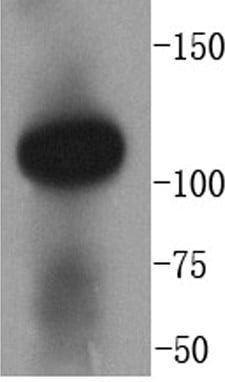
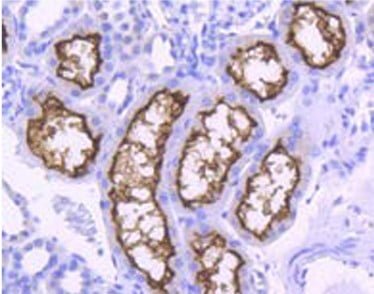


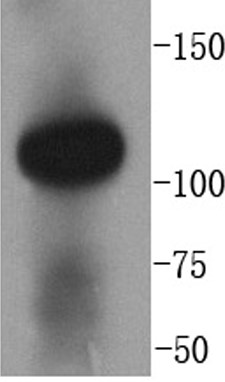
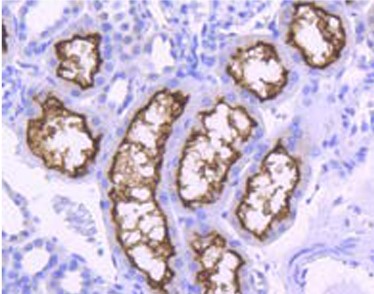
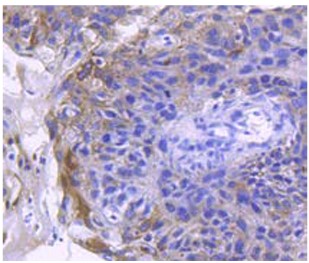
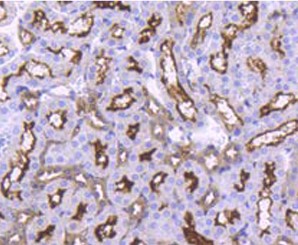
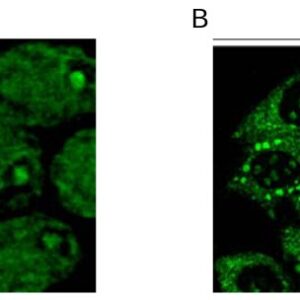
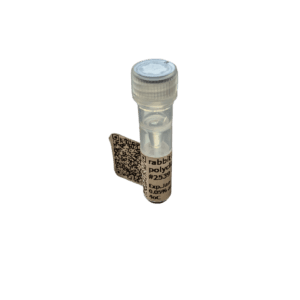
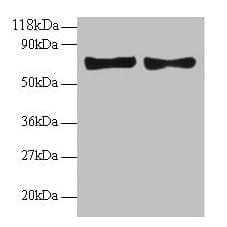
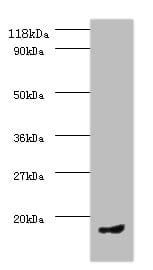

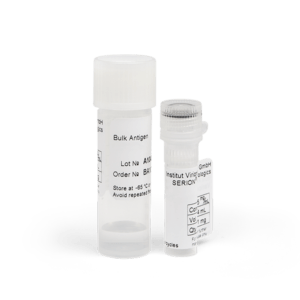
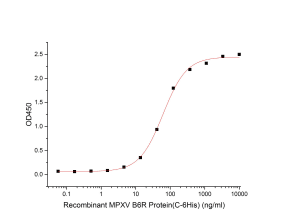
Reviews
There are no reviews yet.